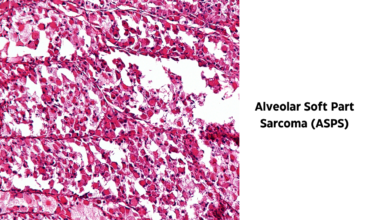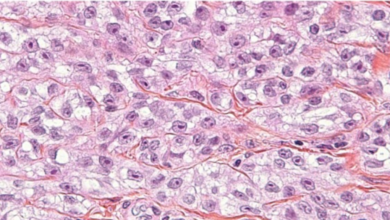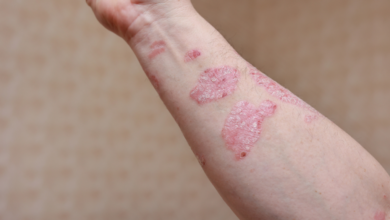
What is Myxofibrosarcoma?
Myxofibrosarcoma is a type of soft tissue sarcoma, a rare type of cancer that originates in the connective tissues. It often develops in the extremities, particularly the arms and legs.
Types of Myxofibrosarcoma
While there aren’t distinct subtypes, myxofibrosarcoma can vary in its aggressiveness and the specific genetic changes present.
Symptoms of Myxofibrosarcoma
Symptoms of myxofibrosarcoma can vary depending on the location of the tumor. Common symptoms include:
• A painless lump or mass
• Swelling
• Pain or tenderness
• Limited range of motion
Causes of Myxofibrosarcoma
The exact cause of myxofibrosarcoma is unknown. However, certain factors may increase the risk, such as:
• Exposure to radiation: Previous radiation therapy can increase the risk.
• Genetic factors: Certain genetic mutations may increase susceptibility.
Who Can Suffer from Myxofibrosarcoma?
Myxofibrosarcoma primarily affects adults, typically those over 50 years old.
Diagnostic Tests for Myxofibrosarcoma
To diagnose myxofibrosarcoma, a doctor may use a combination of tests, including:
• Physical exam: To check for any lumps or masses.
• Imaging tests: X-rays, CT scans, MRIs, and PET scans can help determine the size and location of the tumor.
• Biopsy: A tissue sample is removed from the tumor and examined under a microscope.
Stages of Myxofibrosarcoma
The staging of myxofibrosarcoma helps determine the extent of the disease and guides treatment decisions. The American Joint Committee on Cancer (AJCC) staging system is commonly used.
Treatment of Myxofibrosarcoma
The treatment for myxofibrosarcoma depends on the stage and location of the tumor. Common treatment options include:
• Surgery: To remove the tumor and affected tissue.
• Chemotherapy: To kill cancer cells throughout the body.
• Radiation therapy: To kill cancer cells in a specific area.
Diet and Myxofibrosarcoma Prevention
While a healthy diet can support overall health and strengthen the immune system, it cannot directly prevent myxofibrosarcoma. However, maintaining a balanced diet can help manage any underlying health conditions and improve overall well-being.
Here are some general dietary recommendations:
• A balanced diet: A diet rich in fruits, vegetables, and whole grains can help.
• Limit processed foods and sugary drinks: These can contribute to weight gain and other health problems.
• Maintain a healthy weight: Obesity is linked to an increased risk of certain cancers
Overall Survival Rate of Myxofibrosarcoma
The overall survival rate for myxofibrosarcoma varies depending on the stage, location, and specific characteristics of the tumor. While advancements in treatment have improved outcomes, it remains a serious condition. Early detection and timely treatment are crucial for a better prognosis.
Doctor to Consult
An orthopedic oncologist or a medical oncologist specializing in soft tissue sarcomas is the best doctor to consult for myxofibrosarcoma.
Diseases Associated with Myxofibrosarcoma
Myxofibrosarcoma is not directly associated with other specific cancers. However, certain genetic factors and environmental exposures may increase the risk of developing the disease.
How to Prevent Myxofibrosarcoma
While there’s no guaranteed way to prevent myxofibrosarcoma, maintaining a healthy lifestyle can reduce the risk of certain factors that may contribute to the disease:
• Limit exposure to radiation and certain chemicals: Exposure to these substances can increase the risk of certain types of cancer.
• Maintain a healthy weight: Obesity is linked to an increased risk of certain cancers.
• Regular check-ups: Regular check-ups can help detect any abnormalities early on.
• Healthy lifestyle: A healthy lifestyle, including a balanced diet and regular exercise, can help boost the immune system.





